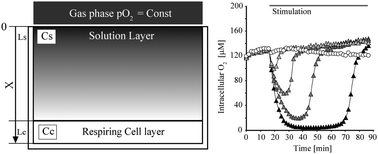Monitoring of cell oxygenation and responses to metabolic stimulation by intracellularoxygen sensing technique†
Abstract
Quenched-phosphorescence

Maintenance work is planned for Wednesday 1st May 2024 from 9:00am to 11:00am (BST).
During this time, the performance of our website may be affected - searches may run slowly and some pages may be temporarily unavailable. If this happens, please try refreshing your web browser or try waiting two to three minutes before trying again.
We apologise for any inconvenience this might cause and thank you for your patience.
* Corresponding authors
a
Biochemistry Department, University College Cork, Cavanagh Pharmacy Building, College Road, Cork, Ireland
E-mail:
d.papkovsky@ucc.ie
Fax: + 353-21-4901698
Tel: + 353-21-4901698
b Tyndall National Institute, University College Cork, Lee Maltings, Prospect Row, Cork, Ireland
c Conway Institute, University College Dublin, Belfield, Dublin 4, Ireland
Quenched-phosphorescence

 Please wait while we load your content...
Something went wrong. Try again?
Please wait while we load your content...
Something went wrong. Try again?
 Fetching data from CrossRef.
Fetching data from CrossRef.
This may take some time to load.
Loading related content
